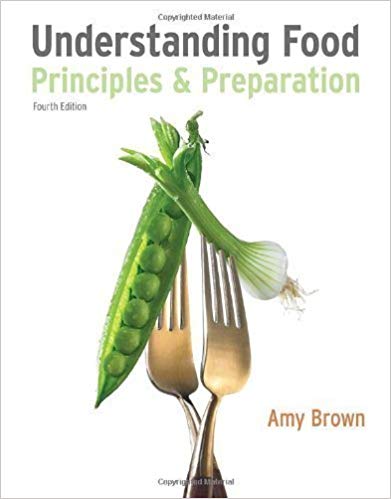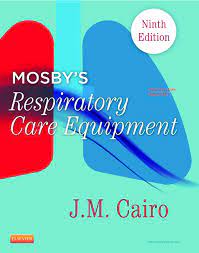Understanding Food Principles and Preparation 4th Edition by Brown – Test Bank
Original price was: $55.00.$25.00Current price is: $25.00.
Digital item No Waiting Time Instant Download
Publisher : Cengage Learning; 4th edition (June 1, 2010)
Language : English
Author: Amy Christine Brown
ISBN-13 : 978-0538734981
ISBN-10 : 9780538734981
Description
Understanding Food Principles and Preparation 4th Edition by Brown – Test Bank
Publisher Description
PART I: FOOD SCIENCE AND NUTRITION.
1. Food Selection
2. Food Evaluation.
3. Chemistry of Food Composition. PART II: FOOD SERVICE.
4. Food Safety.
5. Food Preparation Basics.
6. Meal Management. PART III: FOODS. Protein–Meat, Poultry, Fish, Dairy, and Eggs.
7. Meat.
8. Poultry.
9. Fish and Shellfish.
10. Milk.
11. Cheese.
12. Eggs. Phytochemicals–Vegetables, Fruits, Soups, and Salads.
13. Vegetables and Legumes.
14. Fruits.
15. Soups, Salads, and Gelatins. Complex Carbohydrates–Cereals, Flour, and Breads.
16. Cereal Grains and Pastas.
17. Flours and Flour Mixtures.
18. Starches and Sauces.
19. Quick Breads.
20. Yeast Breads. Desserts–Refined Carbohydrates and Fat.
21. Sweeteners.
22. Fats and Oils.
23. Cakes and Cookies.
24. Pies and Pastries.
25. Candy.
26. Frozen Desserts. Water–Beverages.
27. Beverages. PART IV: FOOD INDUSTRY.
28. Food Preservation.
29. Government Food Regulations.
30. Careers in Food and Nutrition.
Test Bank for Chapter – 2 Food Evaluation
Ans. K/A Page(s) K = knowledge-based, A = application-based
Multiple Choice
b K 23 1. Subjective evaluation is
a. evaluation of food quality that relies on numbers generated by laboratory instruments.
b. evaluation or sensory tests that rely on the opinions of individuals.
c. tests used to detail the specific tastes of individual foods.
d. a sequence of tests that document the characteristics of food preparation.
c K 23, 26 2. In objective evaluations
a. instruments rather than humans are used to measure the characteristics of foods qualitatively.
b. humans rather than instruments are used to measure the characteristics of foods quantitatively.
c. laboratory instruments instead of humans are used to measure the characteristics of foods quantitatively.
d. a sequence of tests are used to document the characteristics of food preparation using humans as taste testers.
f K 23 3. Objective analysis measures
a. the responses of people to food products as perceived by sight.
b. the responses of people to food products as perceived by taste.
c. the responses of people to food products as perceived by touch.
d. the responses of people to food products as perceived by smell.
e. all of the above answers are correct
f. none of the above answers is correct
a K 24 4. Hedonic testing relates to
a. pleasure.
b. selecting the preferred sample.
c. paired preference testing.
d. all of the above answers are correct
d K 24 5. A 9-point scale ranging from “Like Extremely” to “Dislike Extremely” best describes
a. discriminative tests.
b. descriptive tests.
c. analytical tests.
d. none of the above answers is correct
c K 24 6. A(n) _____ test usually uses words like “weak,” “moderate,” and “strong” to describe samples that differ in magnitude of an attribute.
a. ranking
b. duo-trio
c. ordinal
d. paired comparison
c K 24 7. Which of the following would be used to test for sensitivity?
a. triangle
b. duo-trio
c. threshold
d. all of the above answers are correct
b K 24 8. A _____ test is used to find the minimal detectable level of a substance.
a. hedonic
b. dilution
c. difference
d. none of the above answers are correct
b K 24-25 9. _____ tests rely on a trained panel to document differences in a product’s sensory characteristics.
a. Discriminative
b. Descriptive
c. Affective
d. None of the above answers is correct
b K 25 10. General taste panels usually consist of at least _____ individuals.
a. 2
b. 5
c. 7
d. 10
e. 13
b K 25 11. Which of the following is not a criterion for a general taste panel?
a. chew no gum immediately before testing
b. have not ingested other food for at least 4 hours before testing
c. are nonsmokers
d. are of an equal distribution in gender
e. all of the above answers are correct
a K 25 12. Which statement is incorrect regarding food samples?
a. There must be only enough food for one bite.
b. Samples must be taken from the same portion of the food.
c. Food is usually placed in clear or white containers.
d. Lighting and temperature in the room are uniform.
e. all of the above answers are correct
b K 26 13. The best time for taste panels to sample food is
a. early morning before breakfast.
b. mid-morning or mid-afternoon.
c. when panelists are hungry.
d. when panelists are full.
c K 26 14. The penetrometer, the Warner-Bratzler shear, and the shortometer are all used to perform physical tests for
a. visual evaluation.
b. weight/volume measurements.
c. texture measurements.
d. viscosity measurements.
e. concentration measurements.
a K 27 15. Rheology is
a. the study of the flow of and deformation of matter.
b. a measure of three-dimensional space that is often used to measure liquids.
c. the concentration of matter measured by the amount of mass per unit volume.
d. a type of bioactive compound (nutrients and non-nutrients) that has health benefits.
e. none of the above answers is correct
d K 27 16. The viscosity of fluids can determine all of the following except
a. how easily guacamole dip is deposited on tortilla chips.
b. how smoothly mayonnaise spreads onto a slice of bread.
c. how long a tomato will hold its shape.
d. how tender a pie pastry feels to the teeth.
b K 27 17. Which of the following chemical tests measures the degree of unsaturation in fats?
a. pH test
b. iodine value test
c. peroxide value test
d. chromatography
e. fuchsin test
a K 26 18. Which test would be used to observe microorganisms in food?
a. microscope
b. atomic absorption
c. shortometer
d. viscometer (or viscosimeter)
d K 28 19. Which of the following is/are not measured by physical testing?
a. size and shape
b. weight, volume, and density
c. moisture, texture, and viscosity
d. nutrient and nonnutrient substances
c K 24 20. Descriptive testing used to detail the specific flavors or textures of a food or beverage would use
a. hedonic tests.
b. threshold and dilution tests.
c. flavor and texture profiles.
d. personal preference tests.
True/False
F K 23 1. Objective tests conducted for research and development (R&D) rely on the opinions of highly trained individuals.
F K 23 2. Human taste panels are required to evaluate the products through various types of established scientific objective tests.
F K 24 3. Regarding sensory testing, affective tests are used to detect “differences.”
F K 24 4. In regards to subjective testing, effective tests are used to detect “individual preferences.”
T K 24 5. When scoring/evaluating for consumer testing with children, “smiley” or “frowny” faces can be used for scoring in lieu of the hedonic scale.
F K 25 6. Males can usually detect sweetness better than females.
F K 25 7. Whether or not a person prefers a certain aspect is a focus of effective testing.
F K 25 8. Objective analytical tests are usually conducted by an untrained panel that evaluates food products through either discriminative or descriptive testing.
T K 27 9. The Association of Official Analytical Chemists (AOAC) International publishes a book on chemical tests.
T K 27 10. The nature, concentration, and temperature of a liquid all affect its viscosity.
Matching Physical Tests for Food Evaluation
Definition choices:
a. used to measure mineral content
b. measures the concentration of various organic compounds, especially sugar
c. measures the consistency of batters and other viscous foods
d. measures color by detecting the amount and wavelength of light transmitted through a solution
e. measures tenderness by determining the resistance of baked goods such as cookies, pastries, and crackers to breakage
b K 26 1. polarimeter
e K 26 2. shortometer
a K 26 3. atomic absorption
d K 26 4. spectrophotometer
c K 26 5. line-spread test
Discussion/Essay
A K 23-28 1. Define objective and subjective evaluation food testing. Give several examples of tests that demonstrate an understanding of the differences between them.
A K 24 2. Design a product score sheet to be used by both adults and children for the pecan brownies that you plan to sell and distribute to Whole Foods grocery stores. You will use the results of this affective testing to prove to Whole Foods that your product belongs in their stores.
A K 25-26 3. You have been asked by the manager of your school cafeteria to design and conduct a taste panel for their new macaroni and cheese recipe. Describe the general guidelines that you are going to follow when setting up and conducting this taste panel. Include discussion of any problems or issues that you might anticipate.
A K 26 4. Suppose that you are hired as a consultant by new start-up bakery that is owned by a friend of yours. They would like you to conduct physical testing for the following new food items that they would like to introduce to the public in the near future: chocolate chip cookies, vanilla pudding, cheddar cheese crackers, carrot cake cupcakes with cream cheese frosting, and banana protein shakes. For each of these food items, please state which physical test(s) you would plan to conduct and explain the reasoning behind why the tests that you selected are needed.
A K 26-28 5. Suppose that you are interested in interviewing for a job that you saw offered on your school’s job web-site. It is for a commercial laboratory that conducts chemical tests for food evaluation. Before the interview, you want to familiarize yourself with the variety of chemical tests. Describe several examples of tests and discuss where and in what context they would be used. Additionally, be able to provide examples and explanations of the various chemistry analyses.





Be the first to review “Understanding Food Principles and Preparation 4th Edition by Brown – Test Bank”